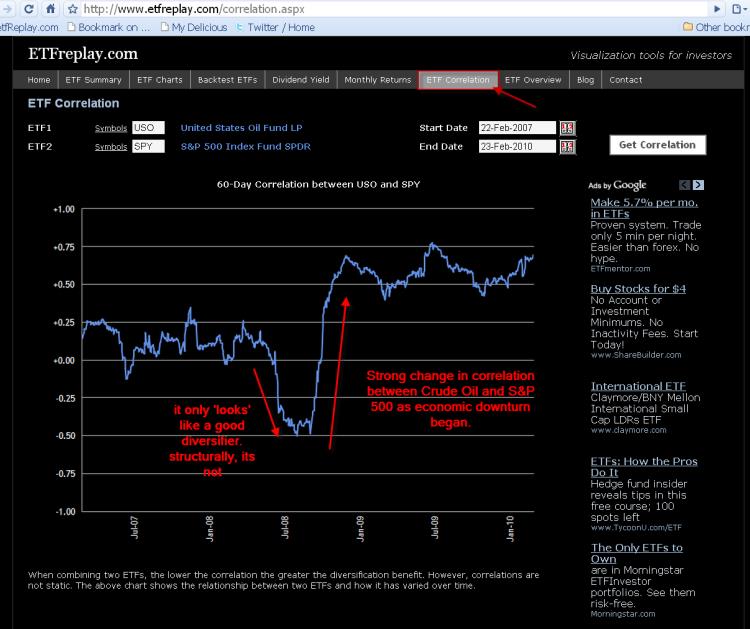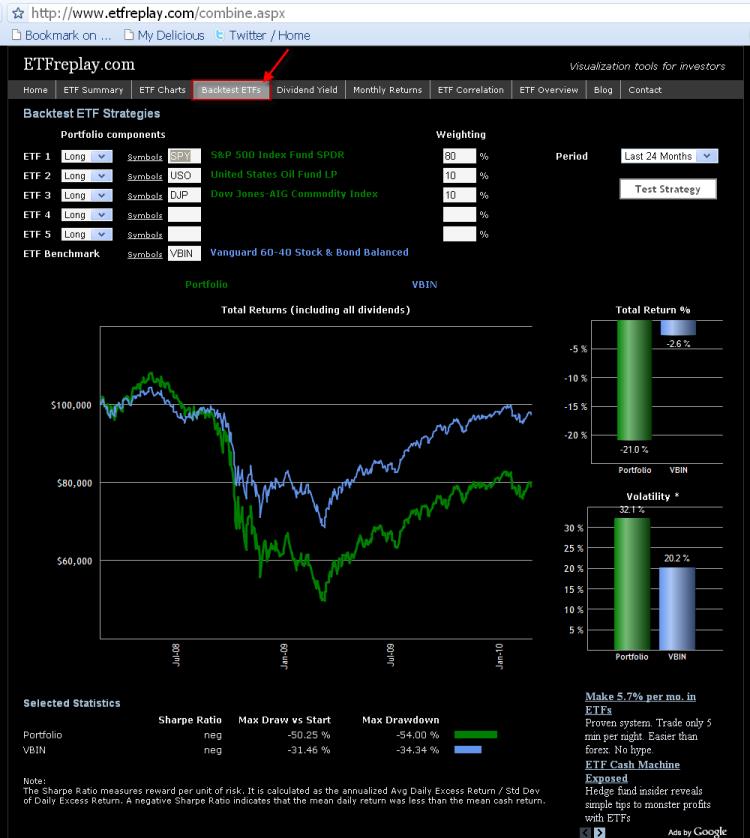May 16, 2010
in Correlation
First, a chart of GLD vs the FXE Euro Currency ETF is a simple yet powerful way to show the primary issue in the world right now:
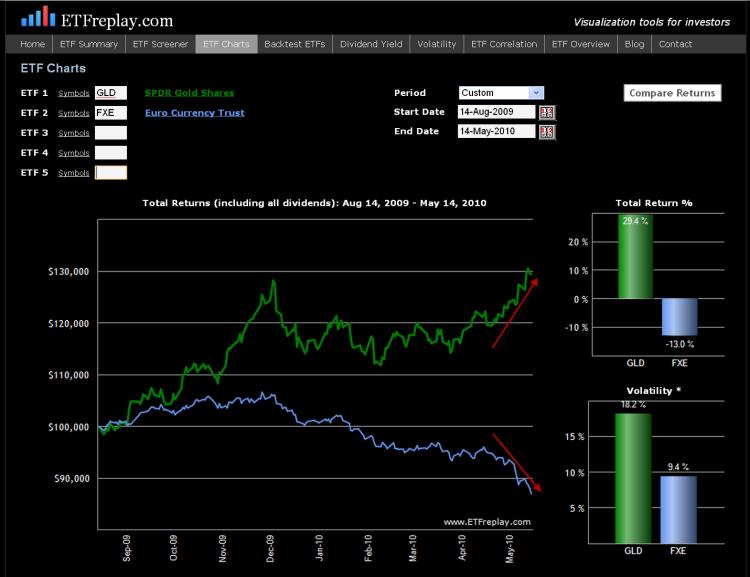
This EC (Euro currency) crisis has brought on a volatility storm (sharply rising volatility / VIX). It is common to hear analysts and portfolio managers say; what does a Greek default have to do with my US domestic small cap stock?? Well, a lot actually if the Greek problems lead to a crisis – as a crisis will cause overall market volatility to rise.
Correlations RISE in times of crisis. This is not just a random statement, it can be viewed mathematically using the Capital Asset Pricing Model (CAPM) framework.
In CAPM, the correlation between two assets can be expressed as a function of their Betas and the variance of the market. If we assume that both assets have a beta of 1.0 and identical residual risk, then it becomes mathematically true that correlations rise as variance rises. Thus, some type of crisis causes overall variance to rise (in this case it’s the escalating debt problems in Europe) and then this rising variance will cause correlations to rise.
Note the serious divergence of small cap US stocks and the MSCI ETF Europe (correlation at first drops on the lower chart) -- and then the subsequent increase in ETF correlation when VIX / volatility increased sharply.
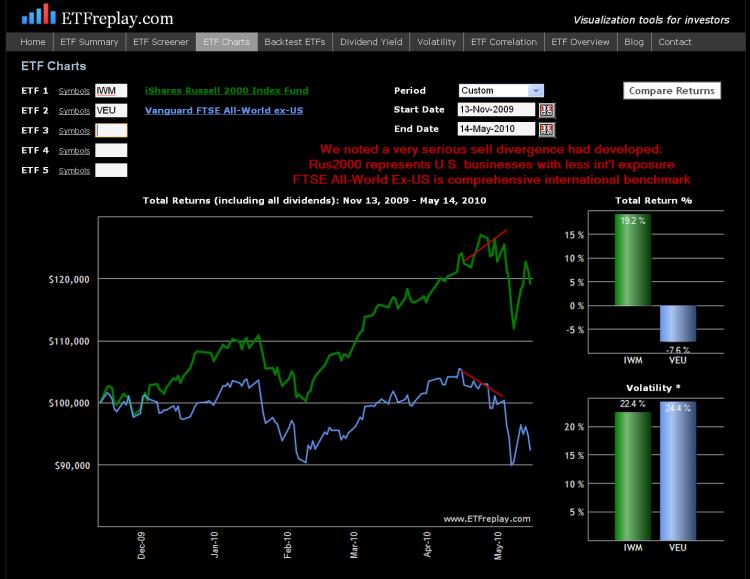
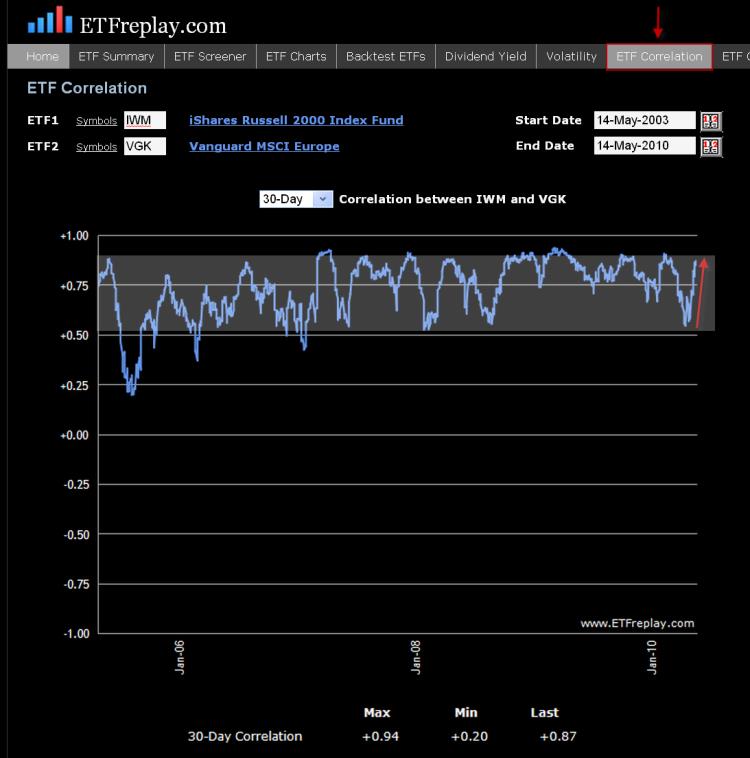
For a more complete technical explanation of this topic see "Active Portfolio Management" (Grinold & Kahn, 2000). This book is extremely technical and really only for professional investors with mathematical orientation.
Feb 24, 2010
in Correlation
I know that this may be implied by others --- but its not enough that something simply be non-correlated to be included in a portfolio. It also needs to have positive expected return.
Structurally speaking, commodities markets are both 1) quite volatile and 2) generally quite sensitive to the overall economy -- which is what the stock market is sensitive to. In times of crisis, its been shown over and over again that correlations generally rise, so that you thought you were getting non-correlation, but instead you just get a more volatile asset that delivers an even larger drawdown for your portfolio. An excellent example is what just happened with crude oil in 2008, see images:
